Vernier Chemistry Kit
Implement a chemistry laboratory with data collection.
Chemistry Go Direct® Standard Package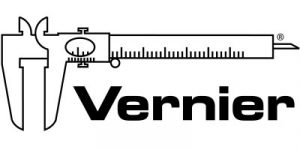
Vernier can be connected directly via Bluetooth or USB to computers, tablets, smartphones, chromebooks, Labquest interfaces, and more. They are designed by educators for educators and have a 5-year guarantee.
This kit includes:
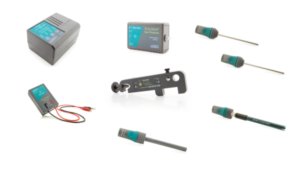
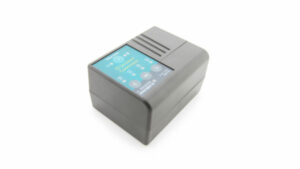
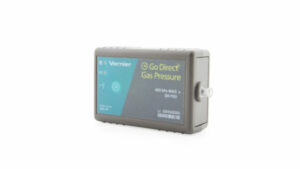
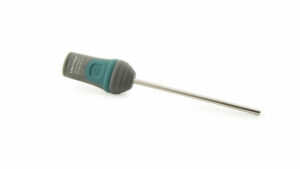
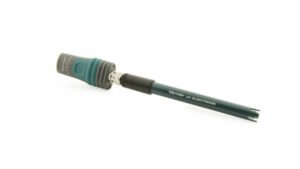
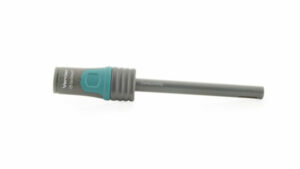
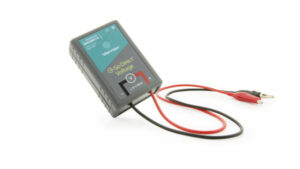
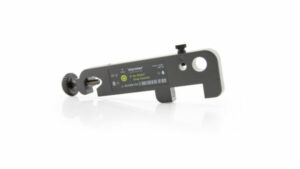
Go Direct® Temperature Probe
Unlike a traditional thermometer, Go Direct Temperature allows students to collect real-time temperature measurements of a single instance or over a period of time. Its range and wireless capability make Go Direct Temperature the go-to sensor for real-world applications.
Use this sensor in a variety of experiments:
- Conduct endothermic and exothermic reactions.
- Investigate the freezing and melting of water.
- Measure the energy content of foods.
- Examine the absorption of radiant energy.
- Monitor environmental conditions.
Rechargeable Battery—Ready When You Are
The robust rechargeable battery offers long battery life and provides always-ready operation when using the sensor wirelessly. Monitor battery life directly from our award-winning Vernier Graphical Analysis™ Pro app, as well as LabQuest® 3. Should the battery run low, simply connect the sensor to the charging cable and keep on collecting—no interruptions or inconvenience to you or your students.
Wireless or Wired—The Flexibility to Choose
Our Go Direct sensors connect directly to your mobile device, Chromebook™, or computer using our Vernier Graphical Analysis™ Pro app—no additional equipment or software purchases are necessary. Go Direct sensors can be used wired via USB or wirelessly via Bluetooth® wireless technology, allowing you to choose the solution best for your classroom or laboratory.
Go Direct® pH Sensor
The Go Direct pH Sensor is an important and versatile sensor for lab and field activities alike. It gives students the freedom to explore pH without the inconvenience of wires‚ no more spilled solutions or dangling wires. The Go Direct pH transmits live readings and captures data in real-time.
Use this sensor in a variety of experiments:
- Conduct acid-base titrations.
- Monitor pH change during chemical reactions.
- Test the pH and alkalinity of bodies of water.
- Investigate household acids and bases.
This sensor is comprised of a pH electrode connected to a Go Direct Electrode Amplifier via a BNC connector. This design enables you to use the Go Direct Electrode Amplifier with other Vernier electrodes, such as the Flat pH Electrode, ORP Electrode, ISE electrode, or a third-party electrode.
Rechargeable Battery—Ready When You Are
The robust rechargeable battery offers long battery life and provides always-ready operation when using the sensor wirelessly. Monitor battery life directly from our award-winning Vernier Graphical Analysis™ Pro app, as well as LabQuest® 3. Should the battery run low, simply connect the sensor to the charging cable and keep on collecting—no interruptions or inconvenience to you or your students.
Wireless or Wired—The Flexibility to Choose
Our Go Direct sensors connect directly to your mobile device, Chromebook™, or computer using our Vernier Graphical Analysis™ Pro app—no additional equipment or software purchases are necessary. Go Direct sensors can be used wired via USB or wirelessly via Bluetooth® wireless technology, allowing you to choose the solution best for your classroom or laboratory.
Go Direct® Gas Pressure Sensor
Use Go Direct Gas Pressure Sensor to monitor gas pressure in a variety of experiments. It records accurate absolute pressure readings relative to the perfect vacuum reference point inside the sensor, allowing you to go below atmospheric pressure or up to 400 kPa. Easily change the displayed units to any one of seven options (kPa, mmHg, inHg, mbar, psi, atm, torr). Includes a syringe, tubing, and stoppers to ease setup for experiments such as Boyle’s law.
The Go Direct Gas Pressure Sensor can be used in a variety of experiments:
- Investigate Boyle’s law and Charles’ law.
- Investigate grip strength and muscle fatigue (using Gas Pressure Bulb, not included).
- Measure the production of oxygen gas produced when hydrogen peroxide is destroyed by the enzyme catalase.
- Monitor plant transpiration.
Rechargeable Battery—Ready When You Are
The robust rechargeable battery offers long battery life and provides always-ready operation when using the sensor wirelessly. Monitor battery life directly from our award-winning Vernier Graphical Analysis™ Pro app, as well as LabQuest® 3. Should the battery run low, simply connect the sensor to the charging cable and keep on collecting—no interruptions or inconvenience to you or your students.
Wireless or Wired—The Flexibility to Choose
Our Go Direct sensors connect directly to your mobile device, Chromebook™, or computer using our Vernier Graphical Analysis™ Pro app—no additional equipment or software purchases are necessary. Go Direct sensors can be used wired via USB or wirelessly via Bluetooth® wireless technology, allowing you to choose the solution best for your classroom or laboratory.
Go Direct® Voltage Probe
The Go Direct Voltage Probe combines a wide input voltage range and high precision, making it an excellent choice for lab investigations of both AC/DC circuits and electromagnetism. Use this differential probe to measure the voltage in simple circuits, to study basic principles of electrochemical cells, or to investigate the resistivity of different metals.
With a range of ±15 V, this system is ideal for use in “battery and bulb” circuits. Go Direct Voltage is capable of kHz sampling and mV resolution, so you can also use it to capture more difficult electric potentials, such as the electromagnetic field induced in a coil by a moving magnet. This single sensor can take the place of several voltmeters in your classroom.
The Go Direct Voltage Probe can be used in a variety of experiments:
- Measure potential difference at various places in series and parallel circuits.
- Investigate Ohm’s law in simple circuits.
- Measure the voltage across a capacitor in RC and RLC circuits.
- Explore Faraday’s law and induced EMFs in a coil of wire.
Rechargeable Battery—Ready When You Are
The robust rechargeable battery offers long battery life and provides always-ready operation when using the sensor wirelessly. Monitor battery life directly from our award-winning Vernier Graphical Analysis™ Pro app, as well as LabQuest® 3. Should the battery run low, simply connect the sensor to the charging cable and keep on collecting—no interruptions or inconvenience to you or your students.
Wireless or Wired—The Flexibility to Choose
Our Go Direct sensors connect directly to your mobile device, Chromebook™, or computer using our Vernier Graphical Analysis™ Pro app—no additional equipment or software purchases are necessary. Go Direct sensors can be used wired via USB or wirelessly via Bluetooth® wireless technology, allowing you to choose the solution best for your classroom or laboratory.
Go Direct® Conductivity Probe
Go Direct Conductivity Probe determines the ionic content of an aqueous solution by measuring its electrical conductivity. It features a built-in temperature sensor to simultaneously read conductivity and temperature. Automatic temperature compensation allows students to calibrate the probe in the lab and then make measurements outdoors without temperature changes affecting data. This temperature compensation can be turned off to perform conductivity studies as a function of temperature.
The Go Direct Conductivity Probe has a range of 0 to 20,000 μS/cm to provide optimal precision in any given range. An alternating current at its electrodes prevents polarization and electrolysis, reducing contamination of solutions. Its ABS-body graphite electrode resists the corrosion typical in metal electrodes.
The Go Direct Conductivity Probe can be used in a variety of experiments:
- Demonstrate diffusion of ions through membranes.
- Investigate the difference between ionic and molecular compounds, strong and weak acids, or ionic compounds that yield different ratios of ions.
- Measure Total Dissolved Solids (TDS).
Rechargeable Battery—Ready When You Are
The robust rechargeable battery offers long battery life and provides always-ready operation when using the sensor wirelessly. Monitor battery life directly from our award-winning Vernier Graphical Analysis™ Pro app, as well as LabQuest® 3. Should the battery run low, simply connect the sensor to the charging cable and keep on collecting—no interruptions or inconvenience to you or your students.
Wireless or Wired—The Flexibility to Choose
Our Go Direct sensors connect directly to your mobile device, Chromebook™, or computer using our Vernier Graphical Analysis™ Pro app—no additional equipment or software purchases are necessary. Go Direct sensors can be used wired via USB or wirelessly via Bluetooth® wireless technology, allowing you to choose the solution best for your classroom or laboratory.
Go Direct® Colorimeter
Use this sensor to explore absorbance and percent transmittance in a variety of experiments including Beer’s law (absorbance vs. concentration) and kinetic studies (concentration vs. time). Students select between four wavelengths (430 nm, 470 nm, 565 nm, 635 nm) to set up their experiment.
Go Direct Colorimeter features one-step calibration for all four wavelengths. It’s as simple as inserting a cuvette of distilled water and pressing the Calibrate button.
Go Direct Colorimeter can be used in a variety of experiments:
- Conduct Beer’s law investigations.
- Determine the concentration of unknown solutions.
- Study changes in concentration vs. time.
- Monitor reaction rates.
Rechargeable Battery—Ready When You Are
The robust rechargeable battery offers long battery life and provides always-ready operation when using the sensor wirelessly. Monitor battery life directly from our award-winning Vernier Graphical Analysis™ Pro app, as well as LabQuest® 3. Should the battery run low, simply connect the sensor to the charging cable and keep on collecting—no interruptions or inconvenience to you or your students.
Wireless or Wired—The Flexibility to Choose
Our Go Direct sensors connect directly to your mobile device, Chromebook™, or computer using our Vernier Graphical Analysis™ Pro app—no additional equipment or software purchases are necessary. Go Direct sensors can be used wired via USB or wirelessly via Bluetooth® wireless technology, allowing you to choose the solution best for your classroom or laboratory.
Go Direct® Drop Counter
Conducting a titration has never been easier. Use Go Direct Drop Counter in conjunction with our other Go Direct sensors, such as Go Direct pH, Go Direct Conductivity, or Go Direct ORP, to perform acid-base, conductometric, or potentiometric titrations.
Designed with a wide drop-detecting area, Go Direct Drop Counter removes the need for precise burette alignment. We’ve also included a large sensor slot for conventional stick-style sensors and a smaller, adjustable slot for temperature probes. The adjustable clamp easily fits our Stir Station and most laboratory ring stands and lattices.
Rechargeable Battery—Ready When You Are
The robust rechargeable battery offers long battery life and provides always-ready operation when using the sensor wirelessly. Monitor battery life directly from our award-winning Vernier Graphical Analysis™ Pro app, as well as LabQuest® 3. Should the battery run low, simply connect the sensor to the charging cable and keep on collecting—no interruptions or inconvenience to you or your students.
Wireless or Wired—The Flexibility to Choose
Our Go Direct sensors connect directly to your mobile device, Chromebook™, or computer using our Vernier Graphical Analysis™ Pro app—no additional equipment or software purchases are necessary. Go Direct sensors can be used wired via USB or wirelessly via Bluetooth® wireless technology, allowing you to choose the solution best for your classroom or laboratory.
Chemistry Kit with Vernier
Vernier Chemistry Kit Skills
Planning and conducting an investigation
+ Formulate questions and problems on scientific topics of interest, based on the observation of phenomena and/or the exploration of various sources.
+Plan and develop investigations that allow collecting evidence and contrasting hypotheses, with the support of technological and mathematical tools.
Analyze and interpret data
+ Describe patterns, trends, and relationships between data, information, and variables.
+ Analyze the relationships between the parts of a system in phenomena and problems of interest, from tables, graphs, diagrams and models.
Build explanations and design solutions
+ Construct, use and communicate scientific arguments.
+ Develop and use evidence-based models to predict and explain mechanisms and
natural phenomena.
+ Design projects to find solutions to problems, using imagination and
creativity.
Assess
+ Evaluate the validity of information from various sources, distinguishing between scientific evidence and interpretation, and analyze its scope and limitations.
+ Critically analyze social, economic, ethical and environmental implications of problems related to public controversies involving science and technology.